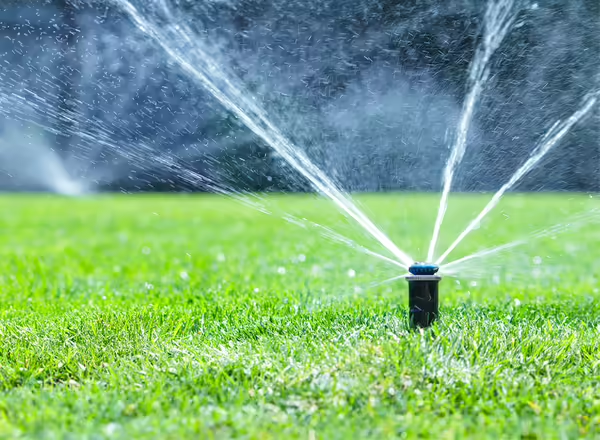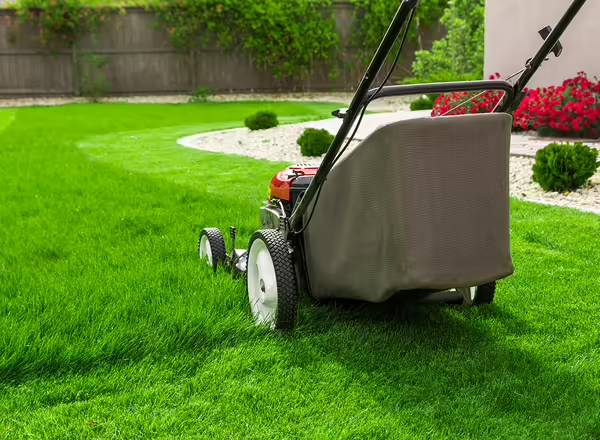
Managing Lawns During Drought
The obvious answer to drought stress on lawns is to apply water. Deep, infrequent watering to the depth of the root system is the ideal situation. This should be done when lawns show the first signs of drought stress, such as wilting, darkening color, and footprints remaining after walking across the lawn. A variety of factors, including budgets, site factors, and watering restrictions all might make this impossible. When an organic lawn care program is in place, the organic matter used to topdress the soil and the resulting improved soil structure will likely extend the greening period farther into the summer before the lawn goes dormant. This improved soil structure will also allow the grass plant to take full advantage of the moisture present and food uptake into the grass plant. Good soil structure will allow the lawn to return to active growth and recover quickly.
Dormancy is an effective drought defense for our cool-season lawns. Once cool-season turfgrasses have gone dormant (stopped active growth, turned off-color) it's best to leave them in that condition rather than watering heavily to cause the grass to green-up again. Breaking dormancy actually drains reserves within the plant, and if conditions remain dry and the weather is hot, the plant is not likely to replace those reserves. In a 'typical' summer, lawns go dormant and resume active growth when conditions improve. The downside of dormancy is the appearance of the lawn and the risk of problems arising on the inactive lawn, such as weed invasions.

The common question is how much water is enough to keep the turf alive during periods of extreme drought? Extreme drought can be described as over four weeks of hot weather with no rain. Drought conditions worsen if soil moisture levels are low going into the summer months. You can monitor drought conditions in your area with the US Drought Monitor. During periods of extreme drought applying 1/4 to 1/2 inch every two to four weeks respectively should be enough to maintain moisture in the crown and roots so the turf can survive and resume growing when conditions improve.

Mow lawns higher throughout the year. A range of 3 to 4 inches would be suggested for most turf stands. As always, mowing should be on a frequent basis so that no more than one-third of the leaf blade is removed in any one cutting. Taller turf allows more shading of the soil, conserving what moisture is in the soil.
Turf-type tall fescue is a lawn species with a deeper root system that shows better tolerance to dry weather. This species will often stay green longer during the Illinois summer months. On some occasions turf-type tall fescue may push the limits a bit too far and succumb to drought instead of going dormant.
Avoid excess nitrogen fertilizer
Avoid applying excess nitrogen fertilizer during hot, dry conditions. Lawn grasses will respond by putting out excessive growth when they should be going dormant. Wait until the early September period for fertilizing most lawns, rather than summer. When growing lawns using organic materials, nitrogen will be available as needed. A soil test can help indicate proper organic matter and nutrient levels.
Whenever possible, limit traffic of any type on a drought-stressed lawn. Drought stress will occur faster on turf stands with poor soil conditions. Soil compaction, clay fill, high pH, and general poor conditions for root growth becomes very evident under stress conditions such as drought. Although immediate corrections may not be possible, make notes of problem areas that will need to be addressed later. Work on improving rooting of the lawn grasses.
Lawns with problem thatch layers will experience drought stress sooner. Many of the same soil factors just mentioned are likely to be the cause. In addition, take a close look at management practices that may contribute to thatch, such as overfertilizing or overwatering.